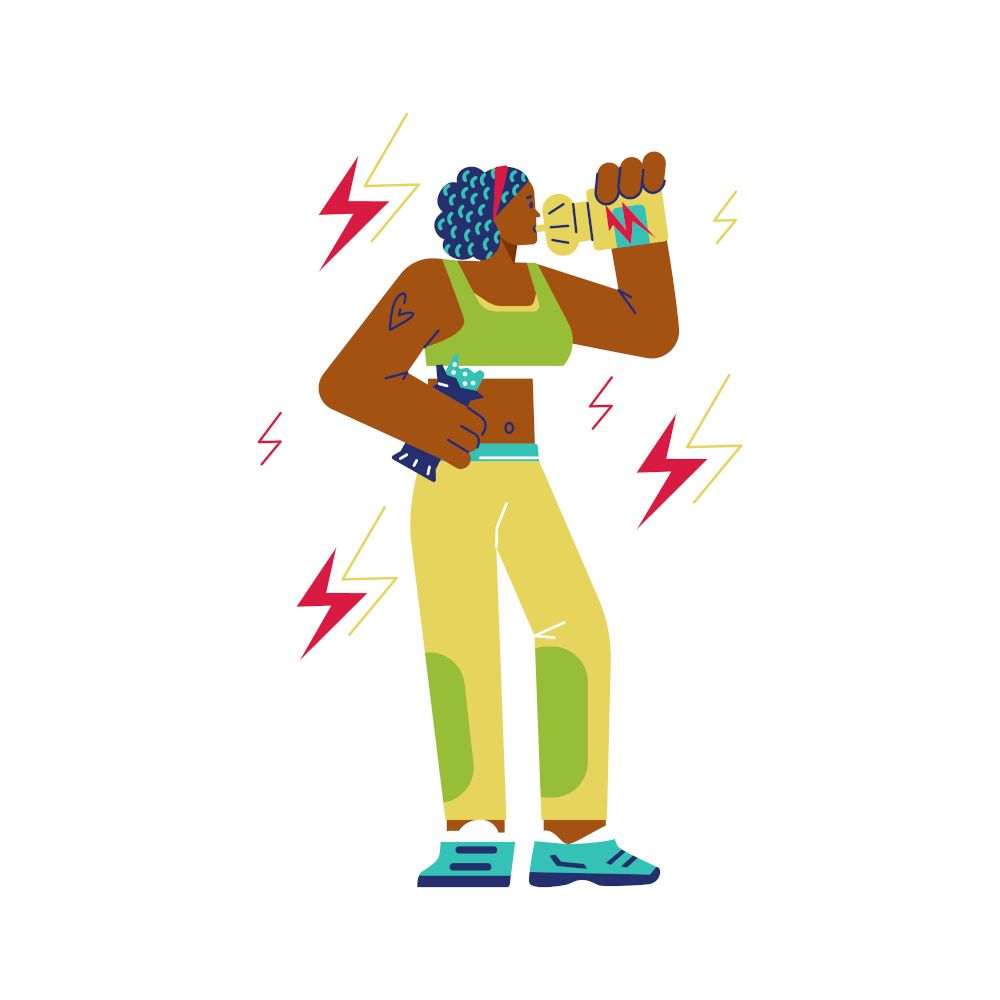Making the most of the preworkout supplements category
Here are some of the emerging innovations in the saturated preworkout market.
Photo © Kudryavtsev / Stock.adobe.com

The preworkout supplements space is trending upward as more consumers seek an athletic boost. Valued at $12.6 billion in 2019, the market is expected to see 9.1% compound annual growth through to 2028, according to SkyQuest Technology Consulting.1 The competitive nature of this niche means there’s plenty of room for ingredient innovation as brands vie for dominance. Here are some of the ways preworkout supplements are evolving in response to market pressures.
An Arms Race of Ingredient Concentrations
The primary ingredient in most preworkout supplements is a mainstay of the exercise industry: citrulline. Dustin Elliott, senior brands manager, Sports, for The Vitamin Shoppe, says citrulline is the most common ingredient in preworkout supplements because it’s also the most effective.
“Citrulline supports nitric oxide [production], thereby promoting blood flow to working muscles to support endurance,” Elliott says. “Citrulline is the most weighted ingredient in today’s preworkout supplements. Brands are attempting to out-do the competition, in some cases, with the amount of citrulline in the product.”
Powders Still Dominate
While RTD formats have taken off with the broader consumer market, that doesn’t appear to be the case for preworkout supplements. Elliott says that in this niche, powders remain the format of choice due to powders’ formulation flexibility. It’s easy to include a high concentration and variety of ingredients in a powder. Flavoring a powder is also more cost-effective than flavoring an RTD product.
New Flavors Leverage Nostalgia
As preworkout supplements gain popularity, flavoring options are expanding. Elliott says that legacy flavors like blue raspberry and fruit punch are old hat; instead, consumers are now looking for more innovative flavors that leverage a sense of nostalgia.
“Grape still does well from a volume standpoint, but the top-selling flavors now are those that simulate candy or fruit-flavored desserts,” Elliot explains. “[Licensed flavors of] candy products that were favorites of Millennials and Gen X have also become top sellers in this category. These include flavors like popsicle and hard candy flavors.”
Some brands are experimenting with new flavors inspired by beverages and confectionery items. For instance, Klean Athlete boasts a lemon tea–flavored preworkout powder, while Iron Brothers released preworkout powders in flavors like gummy bear, orange creamsicle, and grape cotton candy. Supplements like these showcase some of the ways that brands can leverage established flavors while still putting a new twist on an old classic.
Branding and Influencers Matter
The preworkout market’s most significant challenge, Elliott says, is saturation. Preworkout is the second-largest sports nutrition category, and it has become mandatory for sports brands to have at least one entry in this space, as it’s the most lucrative.
“We’re also seeing sports brands continue to make even more premium preworkout ingredients with more ingredients and higher dosages,” Elliott notes. “Consumers are showing that demand for sports nutrition products is pretty inelastic despite rising product costs.”
Elliott notes that brands in this space are facing challenges that mean no single brand can gain market dominance. First and foremost, he explains, are pricing challenges.
“The protein business requires too much volume for good pricing,” Elliott says. “Whey prices are higher than they’ve ever been, so the margins are tighter. Plus, the storage and shipping costs are too much for many brands to handle. So preworkout is the category that every sports brand is competing in without any true legacy products that have survived to this day as top sellers.”
With no brand having carved out a dominant market position, maintaining a strong foothold in the preworkout space means relying on effective marketing tactics. Elliott says that FDA’s new dietary ingredient notification requirements mean no brand can claim its preworkout product is truly “better” than the competition’s; thus, branding and influencers have become more important in this space.
Demand Remains Stable
Despite the price challenges and intense competition in this market, consumer demand for preworkout supplements is still strong. Consumers are increasingly looking for preworkout powders that offer high ingredient concentrations and novel, nostalgia-inducing flavors. While brands must be careful to comply with FDA requirements, experimenting with new flavors and partnering with appealing influencers can help preworkout brands capture a piece of this lucrative market.
Reference
- Global Pre-workout Supplements Market Size to Reach USD 28.68 Billion by 2028 With Growing Fitness Enthusiasts and Gym-Goers – SkyQuest Technology. News Release. SkyQuest Technology Consulting Pvt. Ltd. June 7, 2022. Accessed January 16, 2023. https://www.globenewswire.com/en/news-release/2022/06/07/2457978/0/en/Global-Pre-Workout-Supplements-Market-size-to-Reach-USD-28-68-billion-by-2028-with-growing-Fitness-Enthusiasts-and-Gym-Goers-SkyQuest-Technology.html










